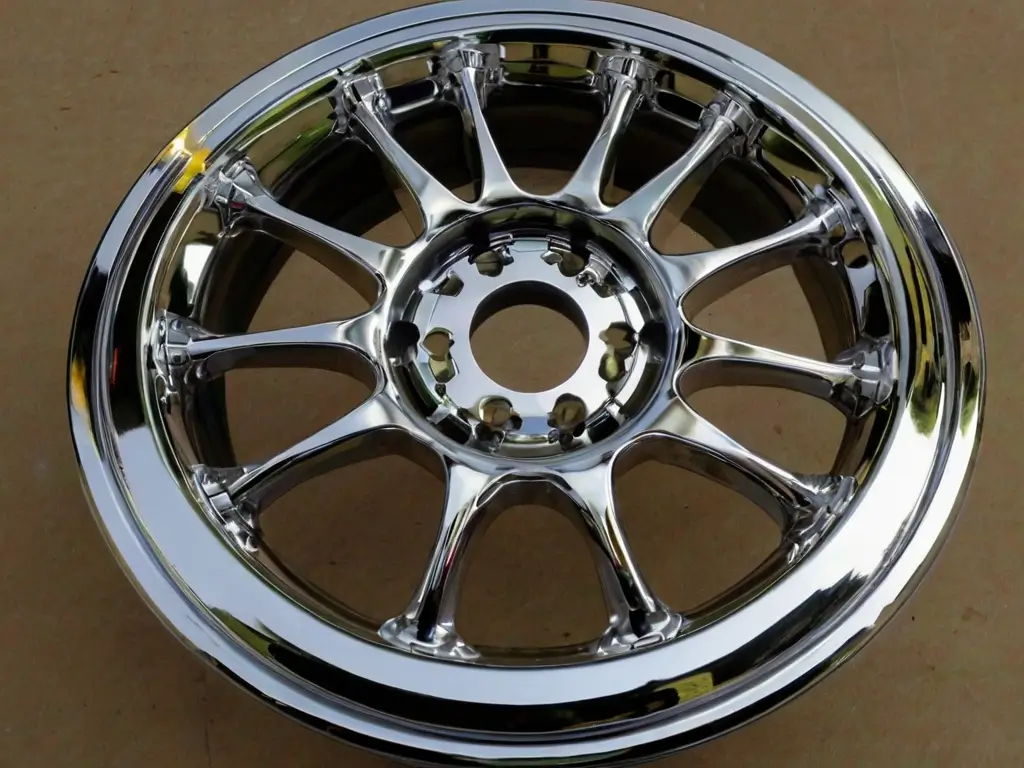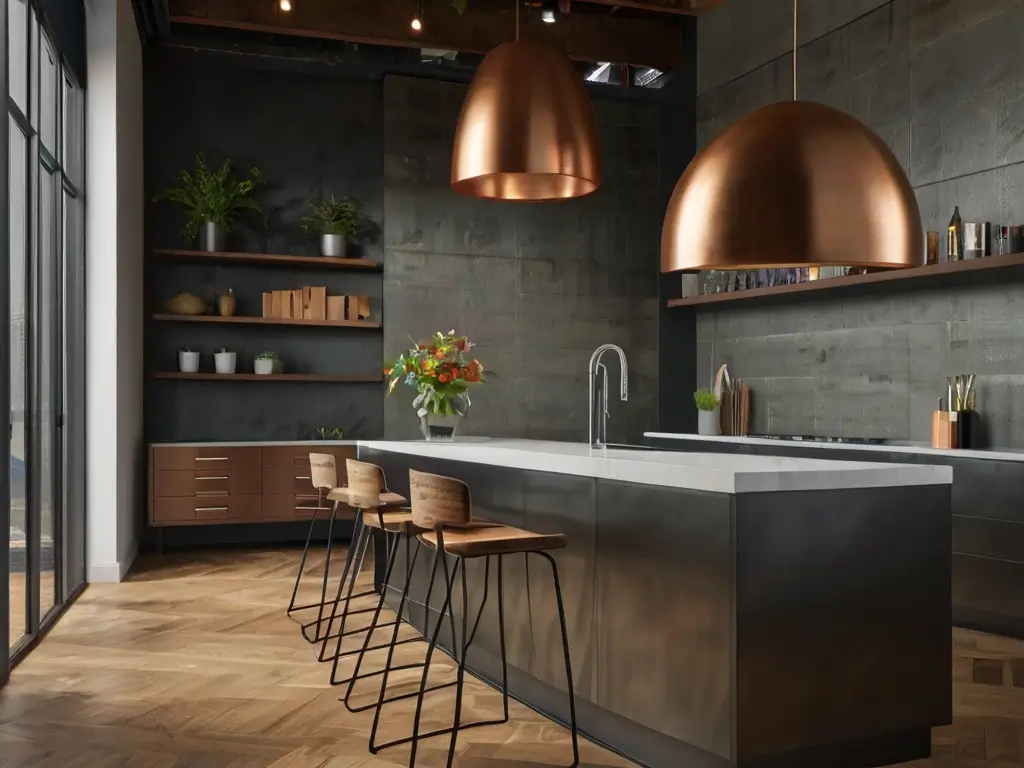
Chrome plating is known for its shiny, mirrored finish that is both aesthetically pleasing and durable. However, there may come a time when you want to change the look of your chromed surface by applying paint. With proper preparation and technique, it is possible to paint over chrome plating and achieve great results.
Painting Over Chrome Plating
Painting over a chrome surface requires more effort than painting over other materials. The slick and nonporous nature of chrome makes getting paint to adhere a challenge. However, it can be done with careful surface preparation and the use of specialty primers and paints designed for metal.
The process involves thoroughly cleaning and sanding the chrome, applying a metal primer, and using thin coats of automotive or acrylic enamel paint. Proper prep work is crucial – any gloss or grease left on the chrome will cause the paint to chip and peel. With attention to detail, you can successfully transform the look of chromed surfaces.
Should You Paint Over Chrome Plating?
Before starting this project, consider whether painting is the best option. Here are some pros and cons to weigh:
Pros:
- Allows you to change the color and finish of the chrome surface
- Much cheaper than re-chroming or replacing chrome pieces
- Can cover scratches, pits, corrosion, and other damage on chrome
Cons:
- Paint may chip or scratch off easier than chrome plating
- Needs occasional touch-ups as paint wears over time
- Requires careful prep work for paint to adhere properly
If you decide painting is the right choice, make sure to use high-quality primers and paints designed for metal. Budget-friendly latex paints will not bond well or last. Investing in the right materials will help the painted finish better withstand wear and last longer.
How to Prepare Chrome Surfaces for Painting
Preparing the chrome surface is the most important step for successful paint adhesion. Any gloss or residue left on the chrome will cause the paint to peel. Follow these steps:
Cleaning
- Wash the chrome with dish soap and warm water. Use a soft scrub brush to remove dirt and grease buildup.
- Rinse thoroughly and dry with a clean, lint-free cloth.
- Wipe down with a solvent like mineral spirits to remove any remaining oils or grease.
Sanding
- Use 120-150 grit sandpaper to scuff up and dull the shiny chrome finish. This helps the primer and paint bond.
- Focus on sanding in the direction of the existing scratches to minimize new scratch marks.
- Sand curved and intricate sections by hand. For flat areas, use a palm or orbital sander.
- Smooth any rough edges or burrs with 220-400 grit sandpaper.
Filling Holes and Repairing Damage
- Fill any holes, pits, or cracks with auto body filler designed for metal. Allow to fully cure before sanding smooth.
- Use a metal patch compound to repair minor dents and imperfections.
- Spot prime repaired areas before applying overall primer coat.
- Replace any badly damaged or rusted sections. New chrome plating won’t adhere to compromised metal.
Final Surface Prep
- Wipe away all sanding debris with a tack cloth.
- Clean one final time with solvent to remove any lingering contaminants.
- Let surface dry completely before priming.
Priming Chrome for the Best Paint Adhesion
Choosing the right primer is critical for getting the paint to properly bond to the chrome’s slick surface. The primer provides a textured base layer for the paint to grip.
Priming Materials for Chrome
- Etching primer contains acids that etch the surface to improve adhesion. Great for smooth metal like chrome.
- Epoxy primer resists corrosion and is very durable. Use for chrome exposed to weather.
- Metal primers meant for auto bodies are ideal for chrome. They resist chipping and handle temperature changes.
- Avoid latex-based primers which don’t bond well to slick surfaces like chrome.
Applying Primer to Chrome
- Use painter’s tape and plastic sheeting to mask off any adjacent areas you don’t want primed.
- Shake the primer can vigorously and apply 2-3 thin, even coats following the manufacturer’s directions.
- Recoat within the recommended time, usually 1 to 2 hours. Too many coats at once will make the primer run.
- Allow the final coat to cure for the recommended time before painting, typically 24 hours.
- Lightly sand glossy areas after curing to create a surface profile for the paint.
Painting Over Chrome Plating
Once properly primed, the chrome is ready for painting. Carefully follow the paint’s instructions for best results.
Paint Types for Chrome Surfaces
Choosing the right type of paint is critical for getting it to properly adhere to chrome’s ultra-smooth surface. Here are the best options:
- Automotive paint – Enamel paints made for cars and motorcycles are formulated to bond to metal and hold up to weather and wear. Automotive spray paint can be used on chrome auto parts.
- Acrylic enamel – This provides an automotive-grade finish in a brushable liquid form. It air dries to a hard, durable finish.
- Epoxy paint – Two-part epoxies offer extremely durable adhesion and are resistant to chipping and fading. These work well for heavily used chrome surfaces.
- Metal and appliance paint – All-purpose enamel paints made for metal products can also be effective for smaller chrome items.
Avoid standard craft acrylics and other paints not specifically made for metal. The adhesion likely won’t be strong enough for chrome.
Paint Application Tips
- Apply paint in thin, even coats to prevent drips and runs, especially on vertical surfaces.
- Allow proper drying time between coats, usually 1-2 hours. Rushing the process can ruin the finish.
- Mix paint thoroughly before and during application. Inconsistent mixing can cause blotchiness.
- Use a small foam roller and brush to paint intricate chrome sections. Maintain a wet edge.
- Remove masking materials slowly after the final coat to avoid pulling up paint.
- Allow the paint to cure fully, typically 5-7 days, before use. The bond strengthens over time.
Achieving a Professional Painted Chrome Finish
Follow these tips for a smooth, durable finish that looks professionally done:
- Take your time prepping. Thorough cleaning and sanding prevents peeling and flaking later on.
- Never skimp on primer quality. Adhesion loss is common with cheap primers.
- Apply paint in slow, thin passes rather than thick coats all at once.
- Use high-quality applicators – quality mini foam rollers give the best finish on chrome.
- Check for drips along edges and corners before moving on. Touch up as needed.
- Allow proper cure times between coats and before use. Patience leads to durability.
- Carefully remove masking materials by scoring the edge and pulling slowly away.
- Add a clearcoat for extra gloss and protection on decorative chromed pieces.
Maintaining Painted Chrome Surfaces
The paint on a chrome surface needs proper care to maximize longevity:
- Allow the full paint cure time of 5-7 days before regular use or cleaning.
- Use mild soap and water to clean. Avoid abrasive compounds or scrubbing.
- Rinse off any road salt, bird droppings, sap, or dirt quickly to prevent etching.
- Reapply fresh paint or touch up any chips as soon as possible. Bare metal rusts quickly.
- Limit exposure to harsh weather and chemicals which can cause premature fading and wear.
- Put a sealant or automotive wax on the paint every 1-2 years for added protection.
Common Questions and Concerns When Painting Chrome
Painting over chrome is an involved process and many people have questions about the best practices. Here are answers to some frequently asked questions:
What kind of sandpaper should be used to prepare the chrome?
Start with a very coarse grit like 120 to completely remove the chrome finish. Then use progressively finer sandpaper, up to 400 grit, to smooth the surface for painting.
Will the paint adhere well directly to chrome?
Generally not without proper sanding and priming first. The slick chrome surface prevents good paint adhesion. Scuffing up the chrome and applying a metal primer give paint something to “grab onto.”
How many coats of primer and paint are needed?
2-3 thin coats of primer help ensure coverage. For paint, 3-5 thin coats are often needed for full coverage and uniform color over chrome. Allow proper drying time between coats.
What’s the best way to apply the paint?
For large chrome surfaces like auto parts, an automotive spray paint works well and saves time. For smaller items, liquid enamels can be brushed on if applied carefully.
How soon can I use the chrome object after painting?
It’s best to allow 1-2 weeks for the paint to fully cure before heavy use or cleaning. This helps prevent chips, scratches, and premature wearing of the painted finish.
Will the paint scratch or chip easily from the chrome?
If proper products are used and fully cured, the paint should bond tightly and be fairly durable on chrome. Using a clear enamel topcoat helps strengthen the paint.
Conclusion
Painting over chrome requires careful preparation and patience but can yield great results. Follow the steps for cleaning, sanding, priming, and painting properly. Use automotive or enamel paints and allow proper cure times. With the right methods, you can successfully transform the look of chrome surfaces while retaining their durability. Just be diligent with the prep work, choose quality paint materials, and maintain the finish once complete.

